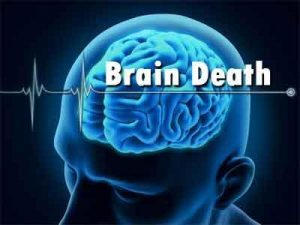- Home
- Editorial
- News
- Practice Guidelines
- Anesthesiology Guidelines
- Cancer Guidelines
- Cardiac Sciences Guidelines
- Critical Care Guidelines
- Dentistry Guidelines
- Dermatology Guidelines
- Diabetes and Endo Guidelines
- Diagnostics Guidelines
- ENT Guidelines
- Featured Practice Guidelines
- Gastroenterology Guidelines
- Geriatrics Guidelines
- Medicine Guidelines
- Nephrology Guidelines
- Neurosciences Guidelines
- Obs and Gynae Guidelines
- Ophthalmology Guidelines
- Orthopaedics Guidelines
- Paediatrics Guidelines
- Psychiatry Guidelines
- Pulmonology Guidelines
- Radiology Guidelines
- Surgery Guidelines
- Urology Guidelines
CTP more accurate for diagnosing brain death compared to CTA

According to a prospective cohort study published in the journal Medical Science Monitor, whole-brain computed tomographic perfusion (CTP) seems to be a highly sensitive and specific method in the diagnosis of brain death (BD).
The study was conducted by Marcin Sawicki, Department of Diagnostic Imaging and Interventional Radiology, Pomeranian Medical University in Szczecin, Poland, and colleagues to determine the diagnostic accuracy of CTP compared to computed tomographic angiography (CTA) for the diagnosis of BD.
The essential clinical diagnostic components of brain death must include evidence of an established aetiology capable of causing BD, exclusion of confounders that can mimic BD, 2 independent confirmations by physical examination for the absence of all brainstem reflexes, and an apnea test. Recently, CTA was introduced to the diagnosis of cerebral circulatory arrest. However, its use for confirmation of BD raises particular diagnostic challenges such as the potential persistence of blood flow in patients with a clinically confirmed diagnosis of BD.
CTP is routinely used for evaluation of cerebral ischemia and vascularization of brain tumors. The technique enables calculation of cerebral blood flow (CBF) and volume (CBV) based on the first passage of a contrast bolus through the brain tissue. Confirmation of BD with CTP, as proposed in the study,
is a new application of the method.
For the study, whole-brain CTP was performed in patients diagnosed with BD and in patients with devastating brain injury with preserved brainstem reflexes. CTA was derived from CTP datasets. CBF and CBV were calculated in all brain regions. CTP findings were interpreted as confirming the diagnosis of BD (positive) when CBF and CBV in all ROIs were below 10 mL/100 g/min and 1.0 mL/100 g, respectively. CTA findings were interpreted using a 4-point system.
Key Findings:
- In brain-dead patients, CTP results revealed CBF 0.00–9.98 mL/100 g/min and CBV 0.00–0.99 mL/100 g, and were thus interpreted as positive in all patients.
- CTA results suggested 7 negative cases, providing 86% sensitivity.
- In the non-brain-dead group, CTP results revealed CBF 2.37–37.59 mL/100 g/min and CBV 0.73–2.34 mL/100 g.
- The difference between values of CBF and CBV in the brain-dead and non-brain-dead groups was statistically significant.
- CTP findings in all non-brain-dead patients were interpreted as negative.
- In all non-brain-dead patients, CTA revealed preserved intracranial filling and was interpreted as negative. This resulted in a specificity of 100% (95% CI, 0.31–1.00) for CTA in the diagnosis of BD.
Based on the study, the authors concluded that whole-brain CTP is a highly sensitive and specific
method for diagnosis of BD. CTP used together with the commonly applied CTA may increase the sensitivity of the test.
For further information click on the link: 10.12659/MSM.906304

Disclaimer: This site is primarily intended for healthcare professionals. Any content/information on this website does not replace the advice of medical and/or health professionals and should not be construed as medical/diagnostic advice/endorsement or prescription. Use of this site is subject to our terms of use, privacy policy, advertisement policy. © 2020 Minerva Medical Treatment Pvt Ltd